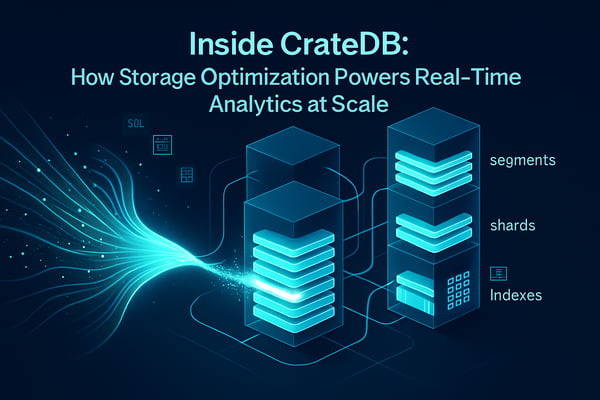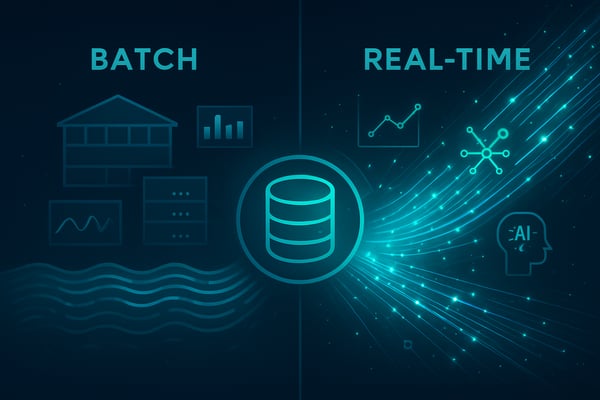Many organizations adopt a Keeping The Lights On (KTLO) strategy to ensure operational stability and minimize disruptions. However, even with a focus on maintaining existing systems, businesses cannot afford to overlook high data ingestion. In today’s digital
landscape, data fuels real-time decision-making, automation, security, and customer experience. While KTLO helps sustain reliability, high data ingestion enables growth, efficiency, and resilience, making it an essential component of modern business operations.
Why Businesses Depend on High Data Ingestion even with KTLO
High data ingestion is essential for real-time decision-making and operational efficiency. Businesses need instant insights to optimize processes, detect anomalies, and improve performance. For example, ingesting market data enables timely trades, while monitoring IoT sensors predicts equipment failures. Delayed data ingestion leads to revenue loss and inefficiencies.
Beyond efficiency, real-time data processing drives competitive advantage and innovation. Companies leveraging large data volumes can innovate faster and stay ahead. AI, automation, and predictive analytics depend on continuous data streams—without them, models become outdated, leading to errors and security risks. Customer experience also hinges on efficient data processing. Slow ingestion causes delays, poor service, and customer dissatisfaction, increasing churn rates. In industries like finance and healthcare,
compliance regulations demand real-time data analysis to avoid legal penalties and reputational damage.
Even KTLO strategies require high data ingestion to maintain system stability, ensuring a reliable IT infrastructure.
Optimizing High Data Ingestion Without Overwhelming Infrastructure
Handling high data ingestion efficiently while maintaining system stability requires a strategic approach. Without proper optimization, businesses can face scalability bottlenecks, performance slowdowns, high infrastructure costs, and data inconsistencies. However, by implementing the right tools and techniques, organizations can achieve
real-time data processing without overloading their infrastructure.
This will require a combination of scalable databases, real-time processing frameworks, efficient storage, caching, and automated governance. By balancing performance, cost, and resilience, businesses can maintain high-speed data processing while ensuring stability and reliability. The key is to continuously evolve ingestion strategies as data volumes grow, ensuring that businesses remain agile and data-driven in a rapidly changing digital landscape.
How CrateDB Adresses KTLO and Data Ingestion Challenges
CrateDB offers a real-time unified data layer for analytics, search and AI. Its distributed architecture can handle high-ingestion workloads, index data instantly and run complex ad-hoc queries in sub-second time frame, even as data volume grows. CrateDB contributes to the correlation between KTLO and efficient data ingestion in the following ways:
- High-Speed Real-Time Data Ingestion: CrateDB avoids bottlenecks in data pipelines, ensuring system reliability and reducing downtime risks as it supports high-throughput ingestion of structured and semi-structured data to be continuously available for KTLO monitoring.
- Distributed Architecture for High Availability: CrateDB guarantees that critical business operations continue running, even during hardware failures or maintenance. It does that by using shared-nothing clustering, allowing seamless horizontal scaling. This offers automatic sharding and replication, ensuring fault tolerance and zero-downtime upgrades.
- SQL-Based Querying with NoSQL Flexibility: By supporting flexible schema handling it is suitable for ingesting structured, semi-structured and unstructured data allowing real-time SQL queries over large-scale datasets. This provides quick insights without the need for complex ETL processes and enables fast decision-making for system monitoring, anomaly detection, and predictive maintenance.
- Seamless Integration with Streaming Platforms: By integrating with Apache Kafka, MQTT, and other event-driven architectures and reducing system latencies by supporting real-time joins, aggregations, and complex queries, CrateDB makes it easier to derive operational insights on-the-fly.
- Built-in Full-Text Search for Log & Event Analysis: CrateDB provides native full-text search capabilities, enabling quick log searches and event correlation. This speeds up issue resolution and minimizes downtime by enabling engineers to diagnose problems faster.
- Storage Reduction, Cost Efficiency & Resource Optimization:
CrateDB uses columnar storage and data compression to reduce storage while improving query performance. On top of that, it helps businesses maintain operational efficiency while controlling costs by providing automatic workload balancing and query parallelization. This provides cost-effective scalability and improved performance while leveraging your existing infrastructure investments in AWS, Azure and GCP.
Conclusion
KTLO plays a vital role in maintaining the stability of IT systems, especially in data ingestion environments. Without proactive maintenance, monitoring, and optimization, businesses risk performance degradation and data loss. Whether you’re working with time-series, tabular, JSON, geospatial, full-text or vector data, CrateDB offers a powerful solution that combines SQL-based querying, high-speed ingestion, and real-time analytics to reduce KTLO burdens and ensure scalable, efficient data processing.
Moving forward, organizations must continue refining their KTLO strategies while leveraging technologies like CrateDB to meet growing data demands.
This article is part of the best practice report: "The Modern Data Stack in 2025: New Tools, Platforms, and Strategies". You can download the full copy here.


